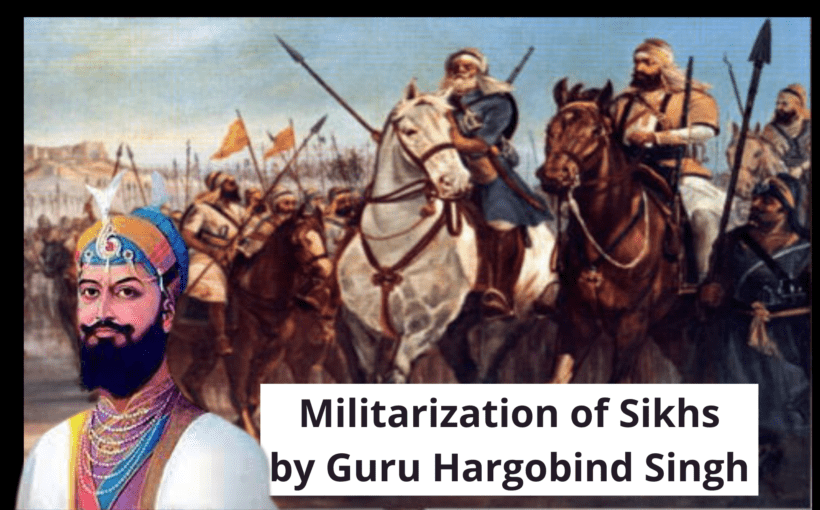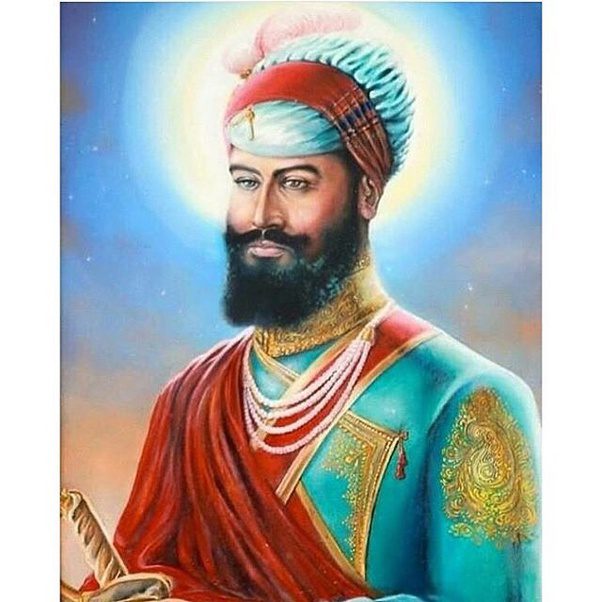The Sikhs have a very long history of valor, courage and heroism. From the inception of their very existence they promoted the message of brotherhood, harmony and sense of togetherness.
Sikh Gurus like Guru Nanak Dev Ji, Guru Gobind Singh Ji and several others are today considered as the Jewels of Indian history.
Warriors like Baba Banda Singh Bahadur and Maharaja Ranjit Singh Ji are regarded as the symbol of courage and bravery who not only protected the Sikh community but also stood against the tyranny of the barbaric invaders.
During the Mughal Era the persecution of the Sikh was at full flow. The 5th Sikh Guru of the Sikhs i.e Guru Arjan Dev Ji, who wrote Adigranth and constructed the famous Golden Temple was executed by the Mughal emperor Jahangir in 1606 at Lahore.
Later the 9th Sikh guru Guru Teg Bahadur was also executed by the later Mughal emperor Aurangzeb (Alamgir).
N
“Guru Teg Bahadur sacrifice his life for Kashmiri Hindu Pandits that were being forcefully converted to Islam by Emperor Aurangzeb”.
Due to religious persecution of Sikhs by the Mughals, the 10th Sikh guru i.e. Guru Gobind Singh Ji decided to introduce a proper standing army for the protection of themselves and innocent people.
“To protect the innocent people and the Sikh community from the oppression of the Mughals Guru Gobind Singh Ji founded the KHALSA (a warrior community) on 30 March 1699”.
But the story that has been forgotten completely is that prior to Guru Gobind Singh Ji’s Khalsa army the Sikhs under their 6th Guru i.e. Guru Hargobind Singh Ji picked up swords and shields to protect their Dharma against the tyranny of the Mughals.
Guru Hargobind Singh continuously defeated the Mughals under their emperor Shah Jahan. It was Guru Hargobind Singh Ji’s courageous Sikh army who were able to crush the Mughals who were much more superior in arms, number and military experience.
Content
Guru Hargobind Singh Ji, who militarized the Sikhs
Guru Hargobind Singh Ji was born in 1595 at Wadali Guru (located about 7 km west of Amritsar). He was the only son the 5th Sikh guru i.e. Guru Arjan Dev.
His succession ceremony took place on 24 June 1606. He became the 6th guru of the Sikh community at the age of just 11. His father i.e. Guru Arjan Dev ji instructed Guru Hargobind Singh ji to start a martial tradition for the sake of Sikh community. The motivation for this was that unarmed Sikhs till now were dependent on God’s help to save themselves from oppressive Mughals, who had executed Guru Hargobind Singh Ji’s father,i.e Arjan Dev. Guru Hargobind Singh Ji decided to change this.
He founded a palace opposite to the Harmandir Sahib which is known as Akal Takt (The throne of the Timeless one).
As a result , Emperor Jahangir imprisoned Guru Hargobind Singh Ji in 1609 when he was only 14 years old. After his release Guru Hargobind Singh Ji started militarization of the Sikhs and encouraged them to maintain a proper physique in order to serve in the battlefield. Rajput princes like Ranbanka Rathore and many others played an important part in training the peasant sikh farmers in the art of warfare. This is known as the passing of Shastravidhya by Rajputs to Sikh.
Furthermore Guru Hargobind Singh Ji wore two swords one represented Temporal Authority (Miri) and the second represented Spiritual Authority (Piri). Miri to fight the oppressors and Piri to defend the innocents.
Due to the rise of the Sikhs in the field of Military, they emerged as a rising threat for the Mughals. The Guru himself became a martial artist (Shashtravidya).
Battles Against the Mughals

The first major battle that was fought between the
Sikhs and Mughals was the Battle of Rohilla. This battle was started by the Mughals as a counter move to the militarization of the Sikhs in the year of 1621.
The Mughals were under the command of Abdul Khan. Seeing the ferrocity of Sikhs, The Mughals fled from the field which resulted in a decisive Sikh victory.
Battle of Amritsar
The Sikh-Mughal relation deteriorated from the battle of Rohilla. The major cause of this second battle was because of a quarrel between the hunting parties of Sikhs and Mughals.
The Mughals were looking for a reasonable cause to start another war against the Sikhs and this gave them the justification for waging another war against the Sikhs in 1634.
The battle of Amritsar lasted for two days. Before the battle the Sikhs were informed about the arrival of the Mughal army and immediately decided to evacuate Lohgarh. The Mughals were able to attack the residing place of Guru Hargobind Singh Ji but the place was evacuated much earlier.On the second day of the battle Bhai Bhanno was killed in the battlefield and after his death Guru Hargobind Singh Ji took the command.
The Battle ended when Mukhlis Khan’s head was “Cleft in Twain” by a blow from Guru Hargobind Singh Ji. Due to this defeat of the Mughals ,a lot of people especially peasants joined Guru Hargobind Singh.
Battle of Kartarpur

The battle of Kartarpur was fought in the year of 1635. Basically it was a type of siege warfare in which the Mughals laid the siege on Kartarpur.
This time the Mughals were under the leadership of Painde Khan while on the other hand Kartarpur was defended by Bhai Bidhi Chand, Guru Hargobind Singh Ji and his son Baba Gurdita.
The siege of kartarpur resulted in a failure for Mughals. This was the only battle Guru Teg Bahadur fought in , in which due to his valor he earned the name ‘TEG’, meaning large sword.
After this, Guru Hargobind Singh retreated to his base at Amristsar.
Importance of the militarization of Sikhs
The picking up of weapons by Sikhs was an important event in Indian history as later they would develop into one of the most ferocious warriors and establish a great Sikh kingdom. Guru Hargobind Singh ji can be attributed for taking Sikhs from a peasantry class to a warrior class.
Donate to our Cause
If you Support what we are doing and would like to contribute to help us grow and reach more Indians to teach them more about such forgotten historic Indian Heroes and stories, please consider donating any amount. It will help us grow



Nice historical evidences to learn from! Very interesting and adventurous indeed!
thanks Chandresh ji